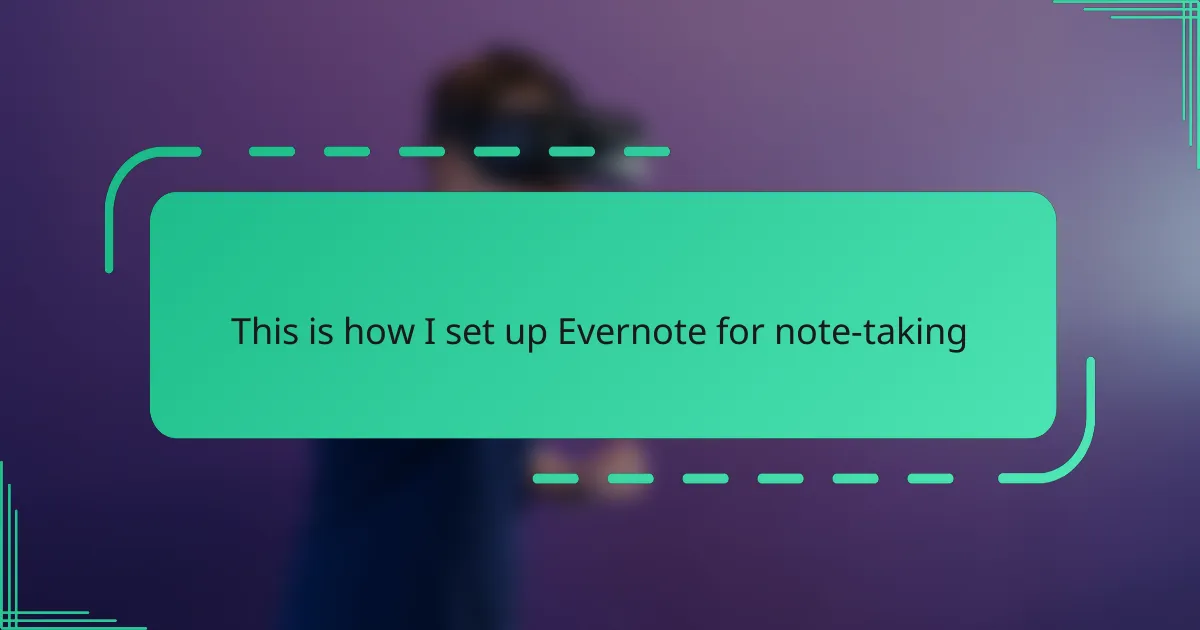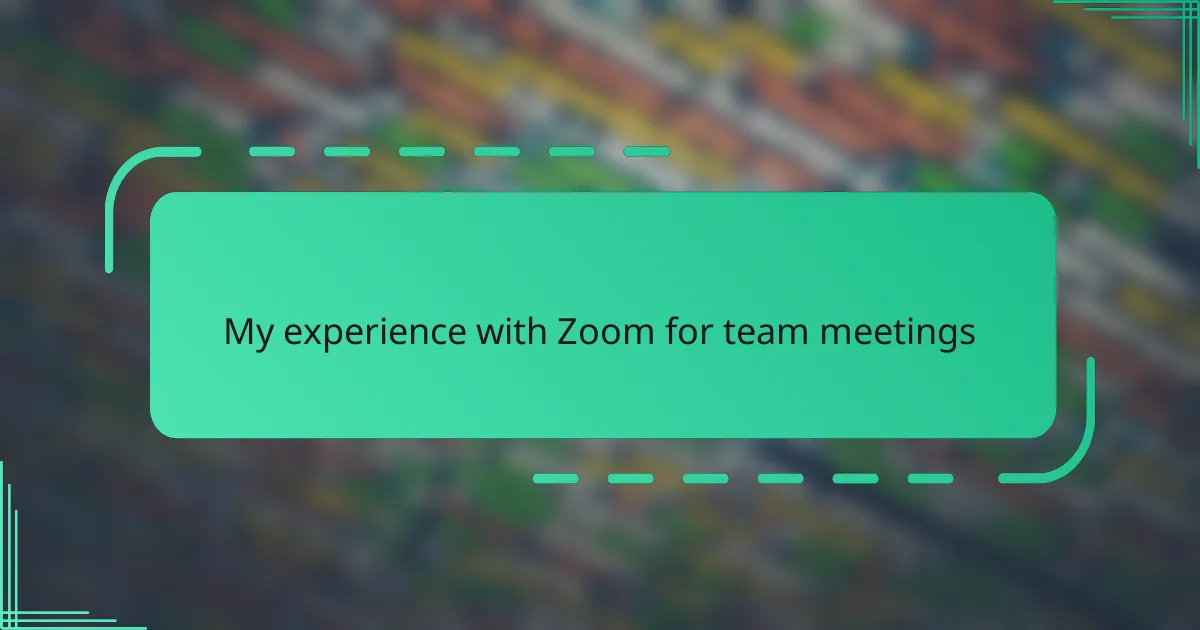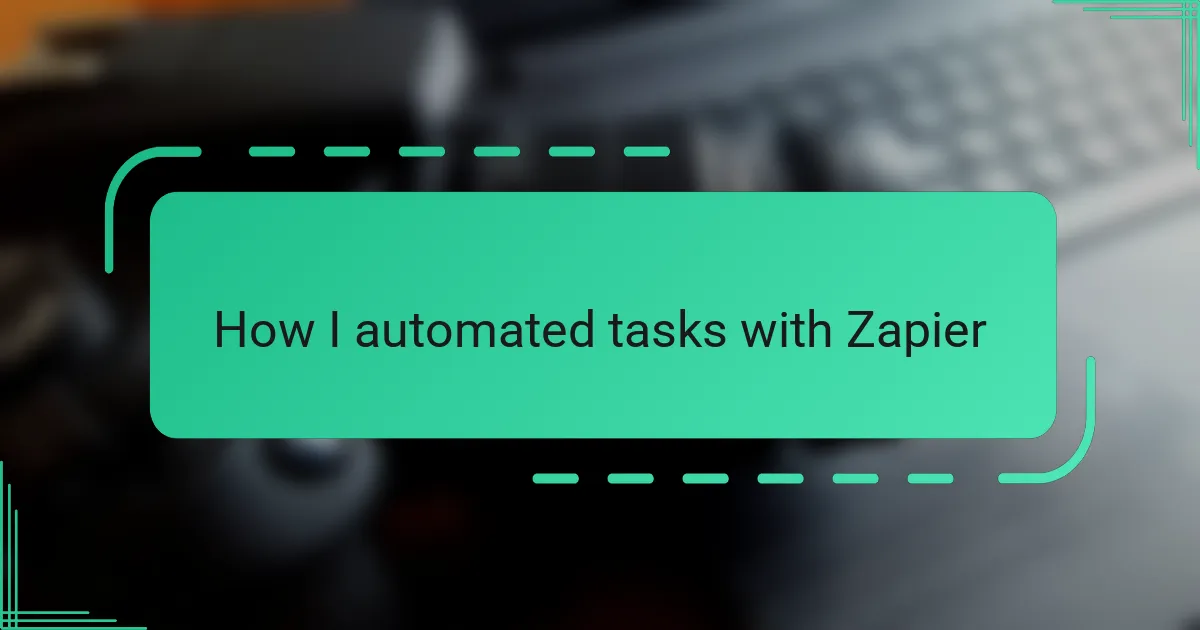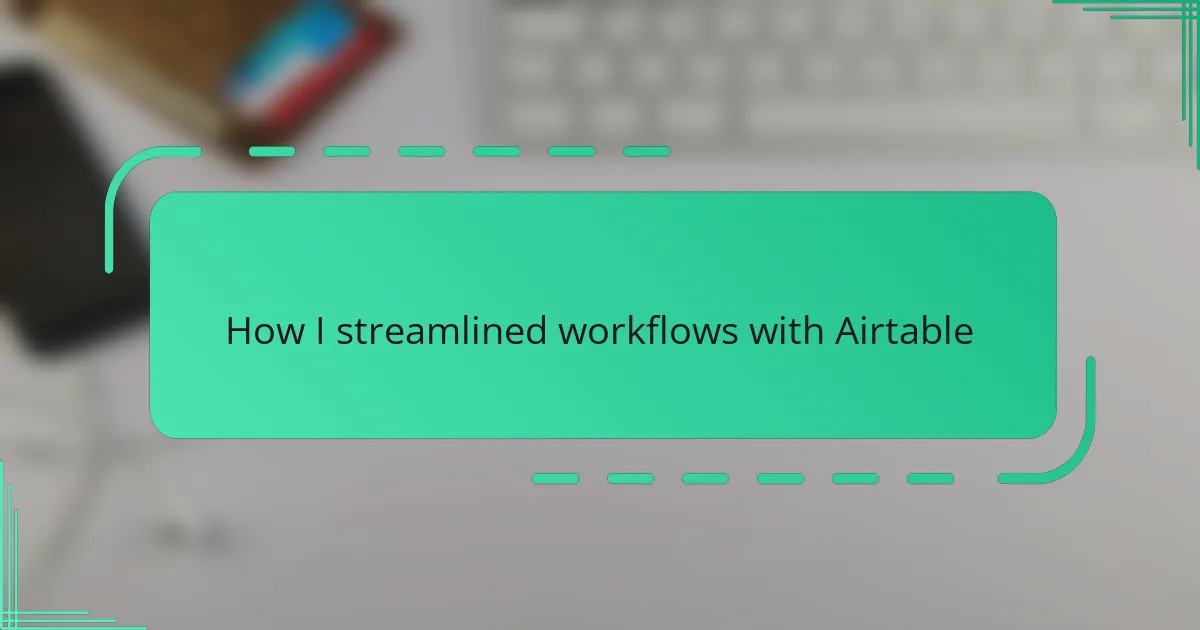Key takeaways
- Evernote allows users to capture, organize, and access notes across devices, enhancing creativity and productivity.
- Key features include powerful search capabilities, customizable notebooks and tags, and a Web Clipper for saving online content.
- Effective organization through tagging and notebook separation simplifies note retrieval and helps maintain focus on projects.
- Personalizing settings and regularly reviewing notes improves efficiency and keeps digital clutter at bay.
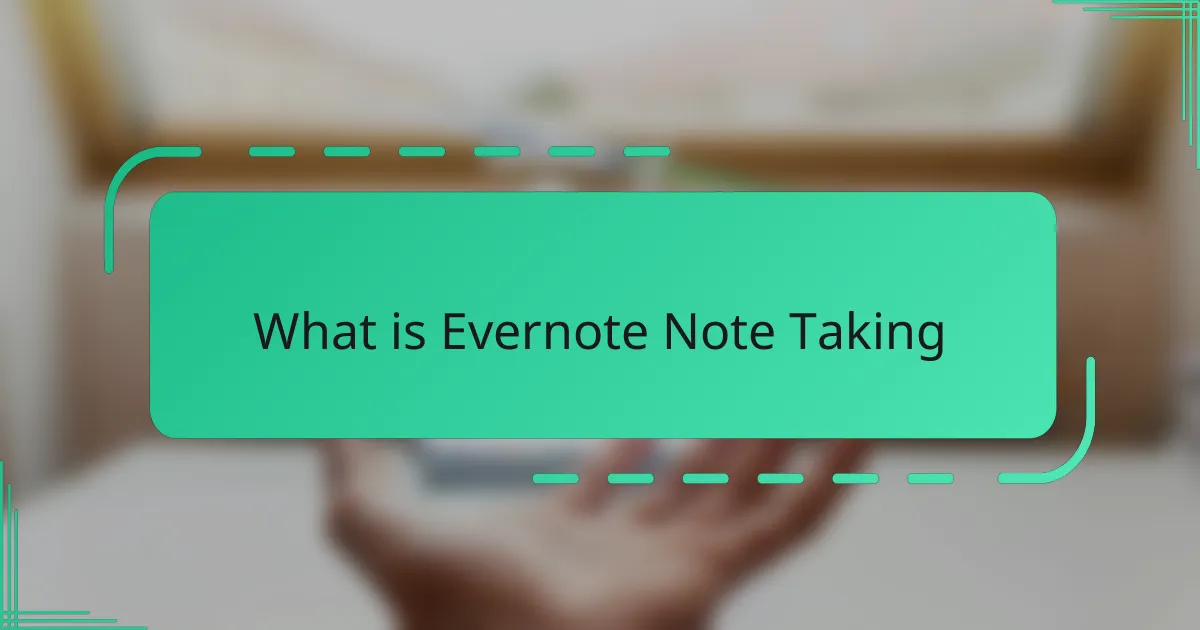
What is Evernote Note Taking
Evernote note taking is a digital method of capturing ideas, tasks, and information all in one place. From my experience, it’s not just about typing notes—it’s about creating an organized, searchable hub that feels like my personal brain extension. Have you ever struggled to find a crucial note buried in a pile of papers? That’s exactly what Evernote helps me avoid.
What I find unique about Evernote is its flexibility. Whether I’m jotting down a quick thought, clipping a webpage, or attaching a photo, it all fits seamlessly into my workflow. This adaptability makes the note-taking process less like a chore and more like an intuitive part of my day.
Ever thought about how traditional notes often get lost or forgotten? With Evernote, every note is instantly synced across devices, which means I can pull up my ideas anywhere, anytime. For me, that instant access sparks creativity and keeps me productive in ways paper notes never could.
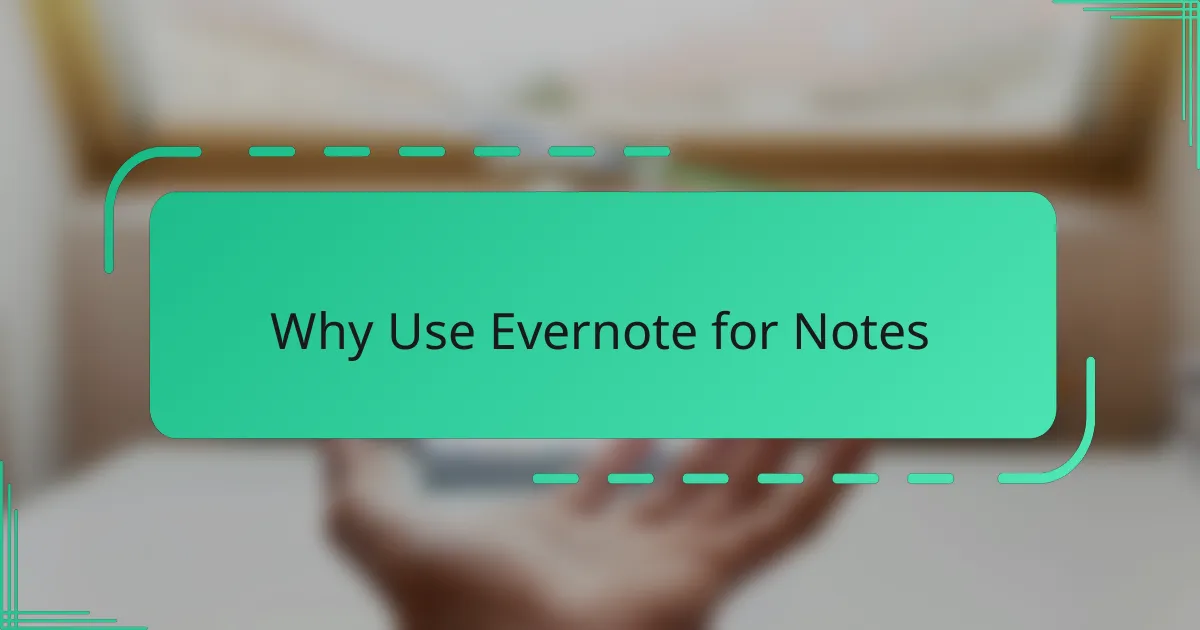
Why Use Evernote for Notes
Why stick with Evernote for notes? From my daily use, it’s the ease of organization that truly stands out. I don’t waste time hunting for scattered scraps of information because everything is neatly categorized and searchable—it’s like having a personal assistant dedicated to my thoughts.
Have you ever felt overwhelmed by a messy desk or a cluttered digital folder? Evernote feels like a breath of fresh air in that chaos. The ability to tag, sort, and link notes keeps my ideas connected in ways that inspire me rather than frustrate me.
What really seals the deal for me is the synchronization across all my devices. Whether I’m on my phone waiting in line or at my laptop during a meeting, I have seamless access to my notes. This constant accessibility makes my workflow flow effortlessly, and honestly, it has changed the way I capture inspiration.
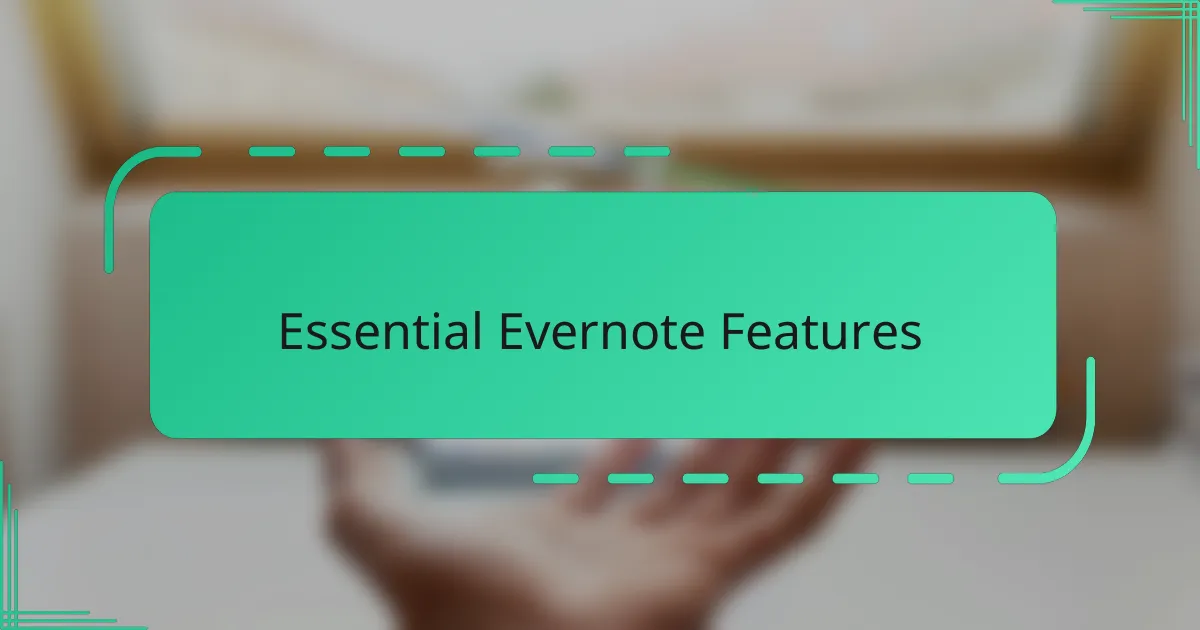
Essential Evernote Features
One of the first Evernote features that grabbed my attention was the powerful search function. Have you ever typed a note but then struggled to remember where you saved it? With Evernote, I can search not only for words I typed but also text within images and scanned documents. That’s a game-changer when you need to find something quickly without flipping through countless notes.
Another feature I rely on daily is the ability to create notebooks and stack them for better organization. I used to have this mental clutter where ideas felt scattered, but now, I separate work projects, personal goals, and random inspirations into neat compartments. It’s like having a filing system tailored exactly to how my brain works, which makes reviewing and building on notes a breeze.
Lastly, the Web Clipper lets me save articles, screenshots, or PDFs straight from my browser. This tool lets me capture online content without losing context, so when inspiration strikes while browsing, I can instantly tuck that info away for later. It’s become my digital scrapbook of ideas, proving that note-taking doesn’t have to be limited to typed text alone.
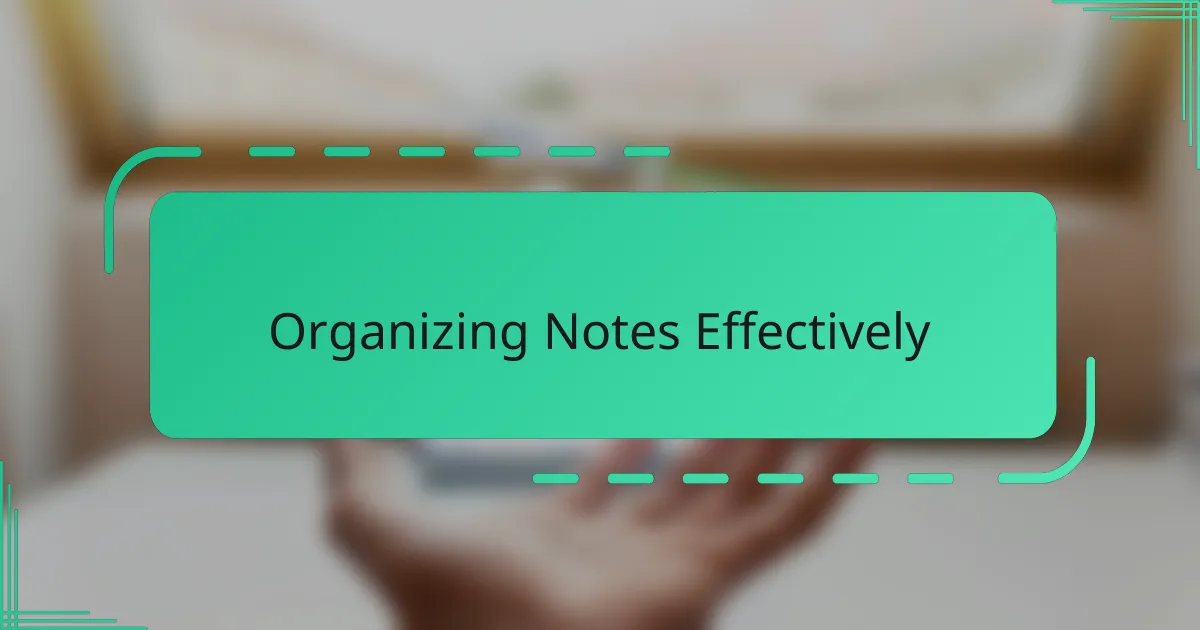
Organizing Notes Effectively
When I first started organizing my Evernote notes, I quickly realized that tagging was a game-changer. Have you ever tried finding a note just by scrolling through a long list? Tags let me group related ideas across different notebooks, so I can pull up everything connected to a project with a single click. It’s like having invisible strings linking my thoughts together.
I also lean heavily on creating clear, specific notebooks for different areas of my life—work, personal, and learning. This separation keeps me from feeling overwhelmed because I know exactly where to go depending on what I need. Over time, stacking related notebooks helps me see the big picture without losing important details buried in individual notes.
One trick I’ve found invaluable is setting reminders on notes that need follow-up. How often do we jot something down and forget to act on it? With reminders, Evernote nudges me at the right time, so I never miss a deadline or important thought. This simple habit transformed my note-taking from just storage to an active part of my productivity system.
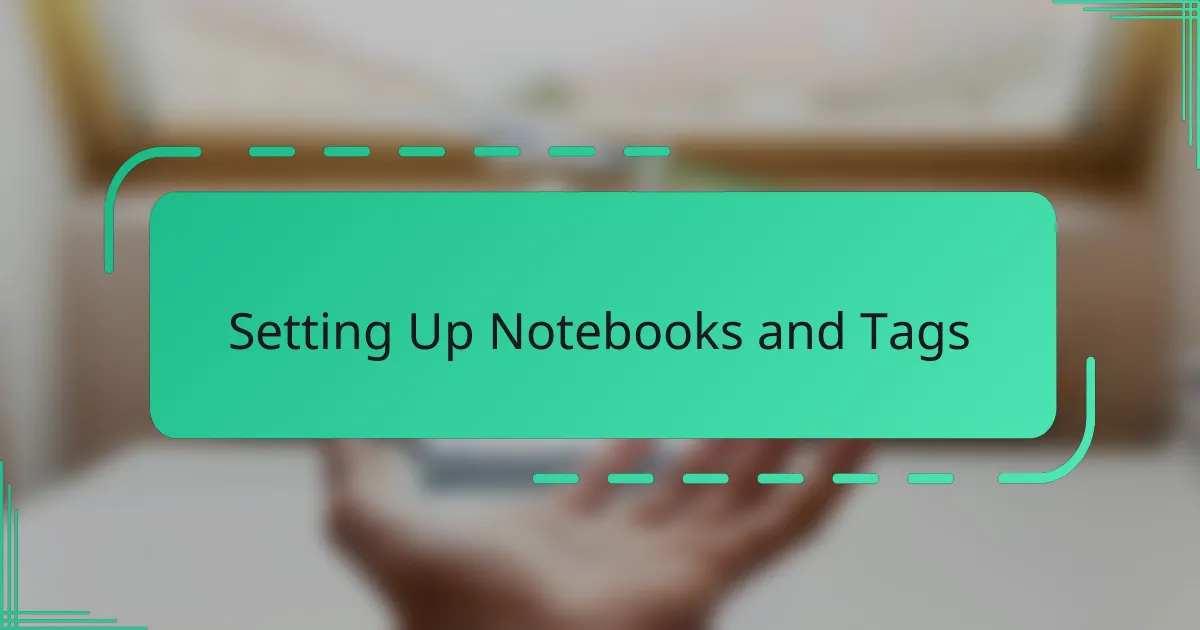
Setting Up Notebooks and Tags
For me, setting up notebooks in Evernote is like creating little homes for different parts of my life. I group my work projects in one notebook, personal ideas in another, and learning materials in a separate spot. This makes navigating through my notes feel less overwhelming and more like flipping through familiar folders on my desk.
Tags have become my secret weapon. Have you ever wanted to find all notes related to a specific topic scattered across various notebooks? By tagging notes with meaningful keywords, I can instantly bring everything together—like magic threads connecting my thoughts no matter where they live. This system saves me from endless scrolling and makes my workflow smoother.
One habit I’ve picked up is keeping tags consistent and intuitive. When I first started, I used different words for the same idea, which was confusing. Now, by sticking to a clear tagging structure, finding and grouping notes feels effortless. It’s like speaking a language only my organized brain understands—and that clarity makes all the difference.
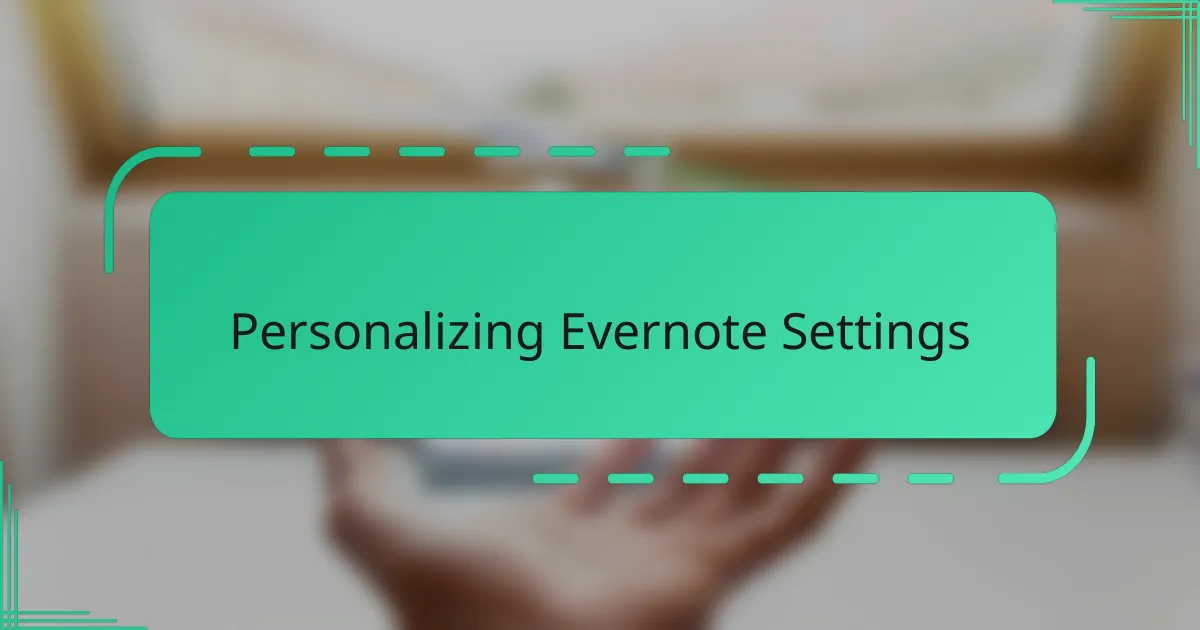
Personalizing Evernote Settings
Personalizing Evernote settings was a game-changer for me—it made the app truly mine. Have you ever felt like a tool just doesn’t fit your style? Customizing fonts, themes, and default note options gave me that sense of comfort, turning the blank canvas into a space where I actually want to write.
One feature I constantly tweak is the default notebook and sorting order. Setting a go-to notebook saves me precious seconds every time I capture a thought, and choosing to sort notes by date or title helps me stay in sync with how my mind works. It’s a small adjustment that makes a surprisingly big difference in how smoothly my day flows.
And let’s not forget notifications. I used to ignore app alerts, but customizing reminder sounds and notification settings in Evernote transformed those nudges into genuine productivity boosters. Tailoring these settings to fit my pace made me feel more in control, rather than overwhelmed by constant buzzes. Have you tried this yet? It’s worth experimenting with.
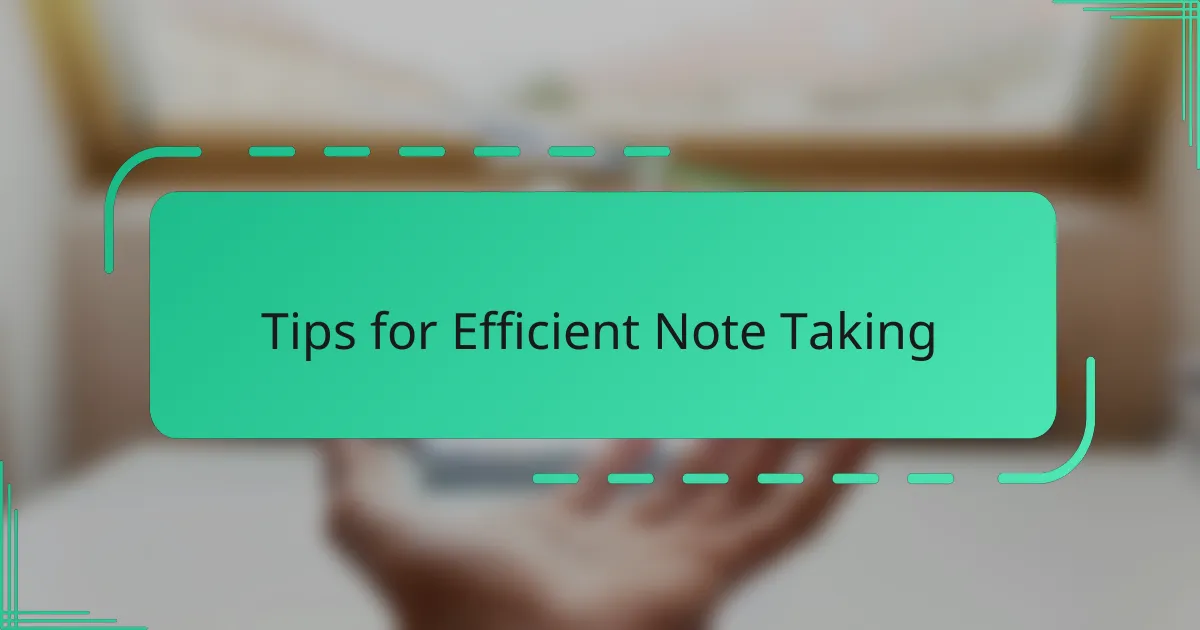
Tips for Efficient Note Taking
Efficient note-taking isn’t just about writing everything down—it’s about capturing ideas in a way that makes them easy to find and build upon later. I remember times when my scattered notes felt like a tangled mess, but focusing on concise, clear titles for each note changed the game for me. Have you ever found yourself staring at a vague note wondering what you actually meant? Giving each note a specific, descriptive title saved me countless headaches.
Another tip that really improves efficiency is making use of checklists and bullet points. When I want to track tasks or break down complex ideas, these simple tools keep my notes organized and actionable. Instead of walls of text, I now have easily scannable notes that help me prioritize and stay on top of what matters. Don’t you think we all work better when our notes are more like roadmaps than novels?
Lastly, I can’t stress enough the value of reviewing and refining notes regularly. It’s tempting to just add new info endlessly, but I’ve found that spending a few minutes to clean up and update notes sharpens my focus. It keeps my Evernote workspace from turning into digital clutter. When was the last time you tidied your notes? You might be surprised how refreshing it feels.
